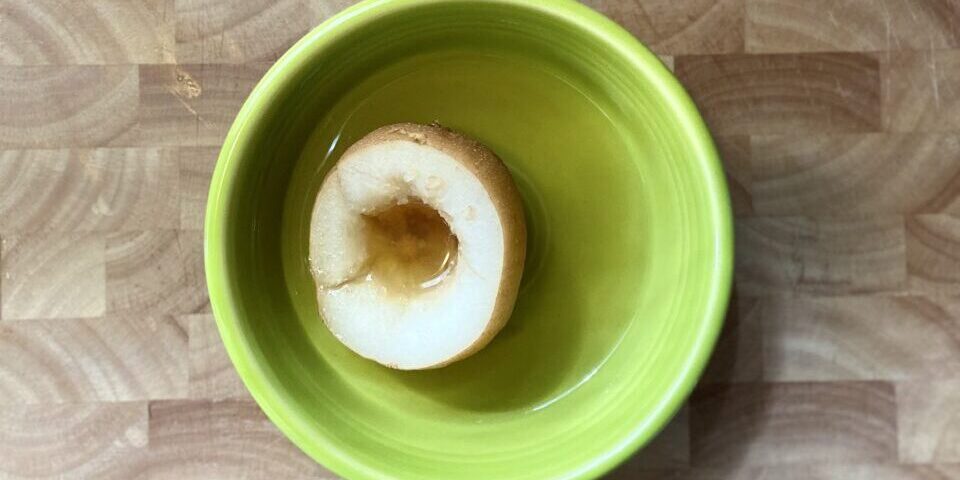Tis the season…for coughs
I did not get sick often growing up, but when I did, it frequently went to my chest and leaving me with a lingering cough during the day and night. Whenever I was unable to have a good nights’ sleep due to a cough, my mom made a magic remedy. I always got better within a few days after having this remedy.
When I drink it now, I think of my grandmother who probably made this remedy for my mom when she had a cough. In turn, my grandmother received this remedy from her mother. The thought makes my heart feel warm. The love that is transmitted through this remedy might do magic.
As this remedy has been passed down through generations in my family, I would now like to pass this magic remedy on to you!
What you will need for this remedy is (preferably) an Asian/Korean pear and (preferably local) honey.
So why pears?
Before I tell you how to make this magical remedy, I want to teach you why pears are scientifically and traditionally beneficial.
In regard to the science, pears are rich in fiber, vitamin C, vitamin K, potassium, and copper.
- The fiber in pears is great at promoting digestion. They also contain micronutrients that help break down sugar and promote peristalsis providing another benefit to proper digestion. In S.Korea, pears are frequently served after meals in the autumn.
- Potassium relaxes the heart and nervous system. It is an important nutrient to bring balance to your electrolytes. When you eat a pear, you meet 7.1 % of your daily potassium requirement.
- Vitamin C boosts the immune system in various ways. It scavenges free radicals which damage the cells in the body. There are many studies showing that vitamin C shortens the duration of cold.
- Copper has powerful antimicrobial properties. It is believed to kill bugs by interfering with their cells by using its high electrical conductance. There are a lot of studies showing its effectiveness in preventing flus. A study showed that Influenza A virus is destroyed in 6 hours on copper surfaces (1). No wonder why it was used to purify water and disinfect skin infections in ancient times. Copper is also involved in the process of getting rid of free radicals, thus it prevents cell damage.
Pear and the Lungs: they are a good pear!
What makes pears so specific to the lungs? Pears have luteoline, which is known to suppress mucus production (2). Mucus moistens the respiratory tract and also keeps invaders from lodging onto it, which is our body’s innate wisdom, right? So we need a healthy amount of mucus. However when there is inflammation, mucus increases clogging up the bronchioles, which causes a cough. Luteoline reduces inflammation and relaxes constriction of the bronchioles, thus it reduces cough and phlegm.
Oh, honey!
Lastly, honey has natural antimicrobial properties. Local bees collect honey from local flowers. You may ingest a tiny bit of pollen when you have local honey. If you have allergies, consuming local raw honey is a good way to bolster your allergy treatment regimen (3). By having local honey, you are increasing your exposure to allergens (pollen) slowly and gently, which, over time,will build tolerance to the allergens.
Fruits bring the Qi down
Energetically speaking, fruits have a downward direction of energy. The Lung, from the Chinese medicine perspective, governs the Qi and its normal direction of flow is downward. When there are pathological changes in the Lung, the direction of Lung’s Qi goes up; a cough would be an example of Lung qi going up.
Now that you know why the ingredients will be beneficial for a cough, let’s get back to making the Magical Cough Elixir.
Magical Cough Elixir
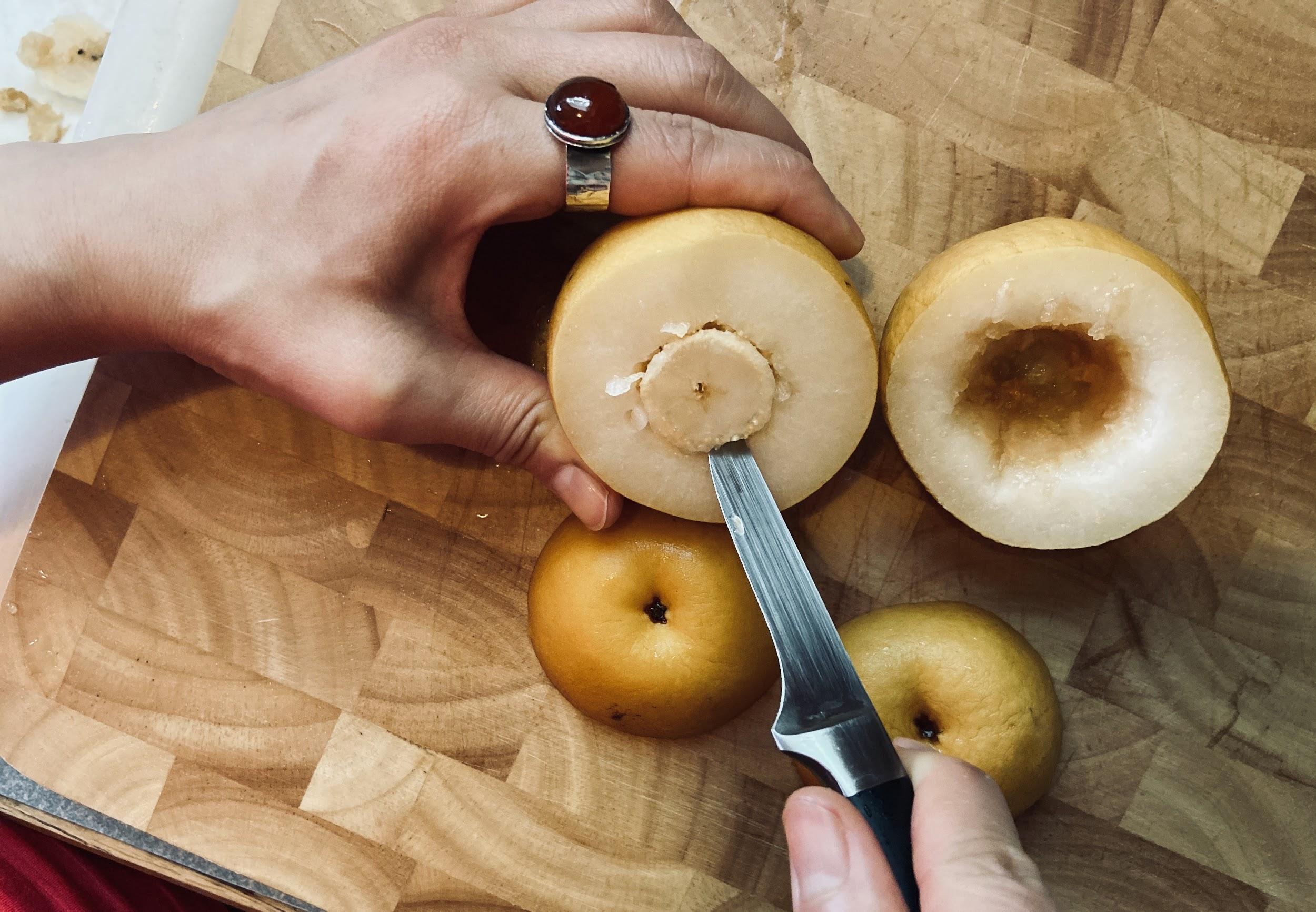
Make a quick and safe trip to an Asian grocery store. Purchase Asian/Korean pears. They are round and plump so that they can sit in a bowl.
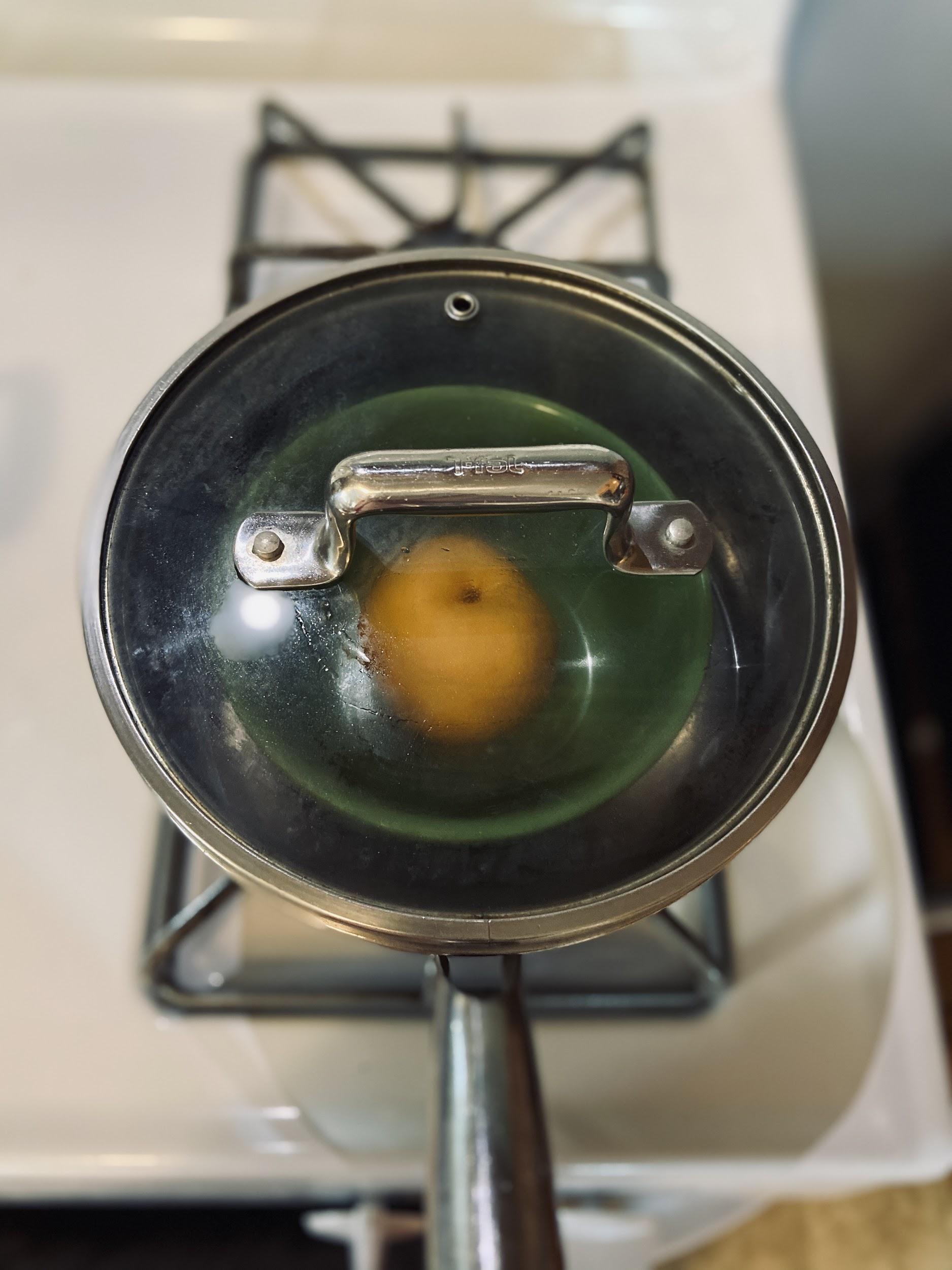
- Wash the pears with cold water.
- Slice off the top and core each pear (don’t throw the top away).
- Fill in the core with local honey and place the top slice back on the pear.
- Put the pears in a double boiler with the lid on and heat on low to medium heat until soft. Poke with a fork to check softness. If you do not have a double boiler, no worries. Put a pear in a heat-safe bowl and put the bowl in a pot with about an inch of water in it. The water will steam the pear and heat the bowl, so don’t add the water higher than the lip of the bowl.
- The pear will give out some juice to the bowl. This is the elixir! Drink the juice and eat the pear. You can refrigerate the rest of it and warm it up before eating.
Add Herbs
For an additional effect, you can add medicinal herbs with the honey.
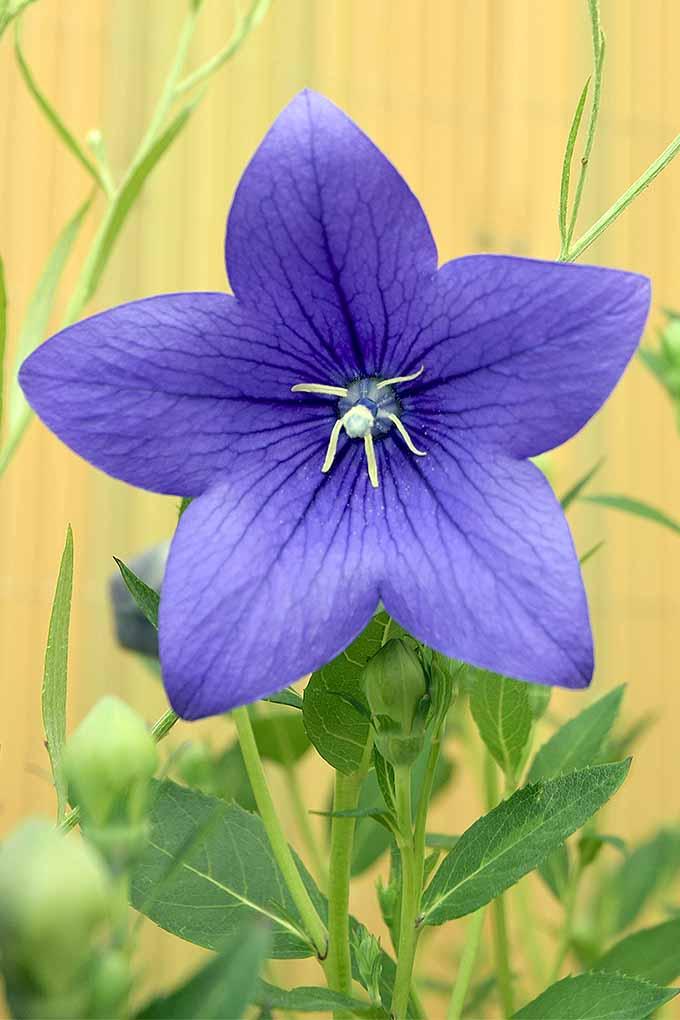 Balloon flower root (Platycodi Radix, Jiegeng) is bitter, acrid, and neutral in temperature. It soothes the throat and is great for getting rid of phlegm, mucus, or pus. Energetically, balloon flower root lifts the Qi/energy of other herbs up to the throat and chest allowing their action to be directed to that area.
Balloon flower root (Platycodi Radix, Jiegeng) is bitter, acrid, and neutral in temperature. It soothes the throat and is great for getting rid of phlegm, mucus, or pus. Energetically, balloon flower root lifts the Qi/energy of other herbs up to the throat and chest allowing their action to be directed to that area.
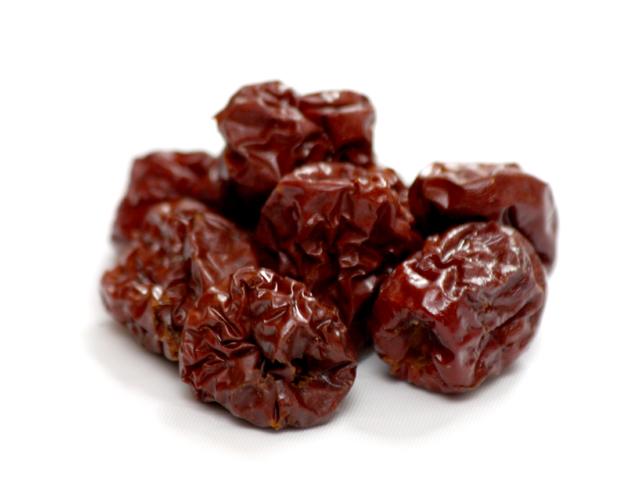
Chinese date (Jujubae Fructus, Dazao) is sweet and warm. It does not treat cough directly, but it is very nourishing and tonifies Qi and Blood. It is also a good addition if your energy is low.
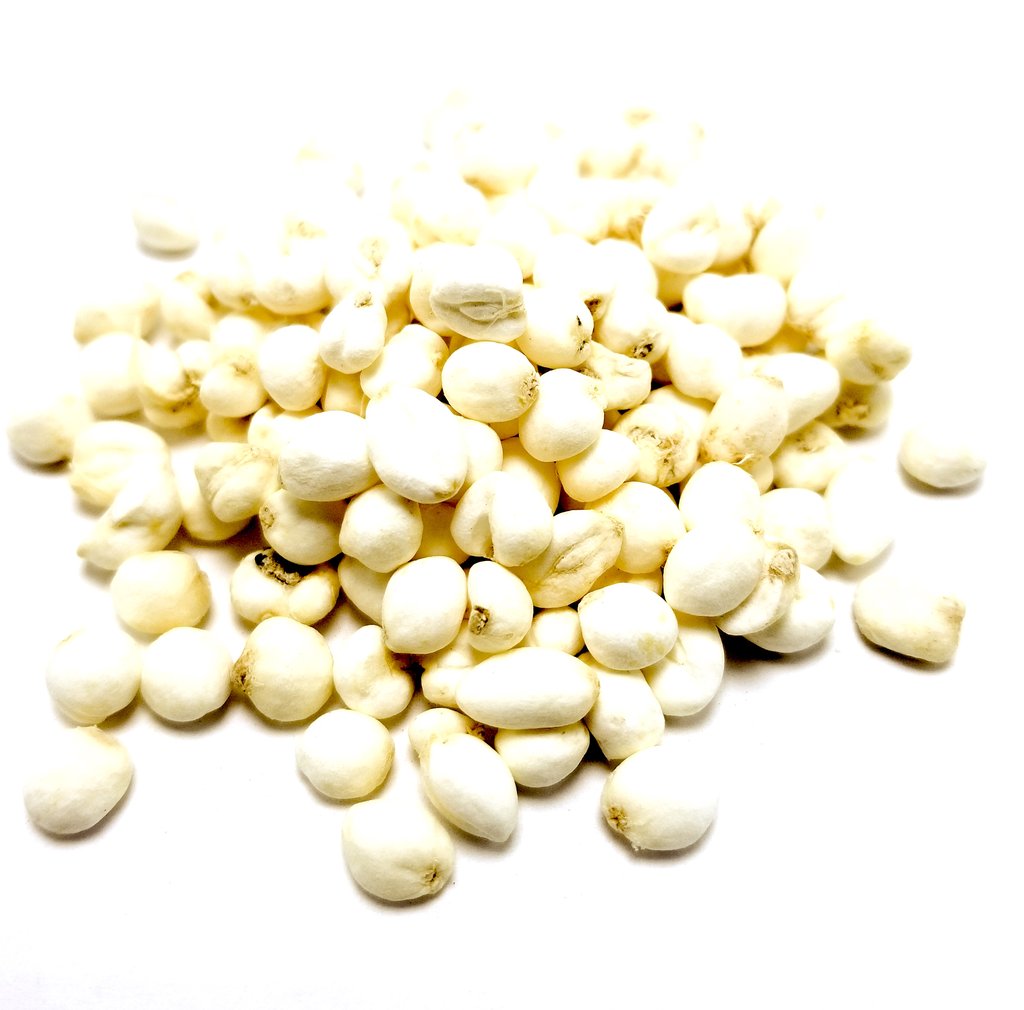
Fritillaria (Fritillariae ciirhosae Bulbus, Beimu) is bitter, sweet, and slightly cold. If you run hot, you feel warmer with your ailment, and/or you have tenacious mucus, this is a good choice. Fritillaria cools and moistens the lungs and directs the Qi of the Lungs down.
Get started
You can purchase these herbs at a local Chinese herbal pharmacy. But remember, it is encouraged to have your condition diagnosed by a health practitioner in order to determine if you require more cooling or warming herbs. Also, it is always better to take a prescribed formula rather than a single herb, since herbs have synergistic effects when they are boiled together.
References
- J. O. Noyce et al.: Inactivation of Influenza A Virus on Copper versus Stainless Steel Surfaces. Appl. Environ. Microbiol. 73, 2748 (2007)
- M.-L. Shen et al.: Luteolin Attenuates Airway Mucus Overproduction via Inhibition of the GABAergic System. Sci. Rep. 6, 1 (2016)
- K. Saarinen et al.: Birch Pollen Honey for Birch Pollen Allergy – A Randomized Controlled Pilot Study. Int. Arch. Allergy Immunol. 155, 160 (2010)
Images courtesy of author
